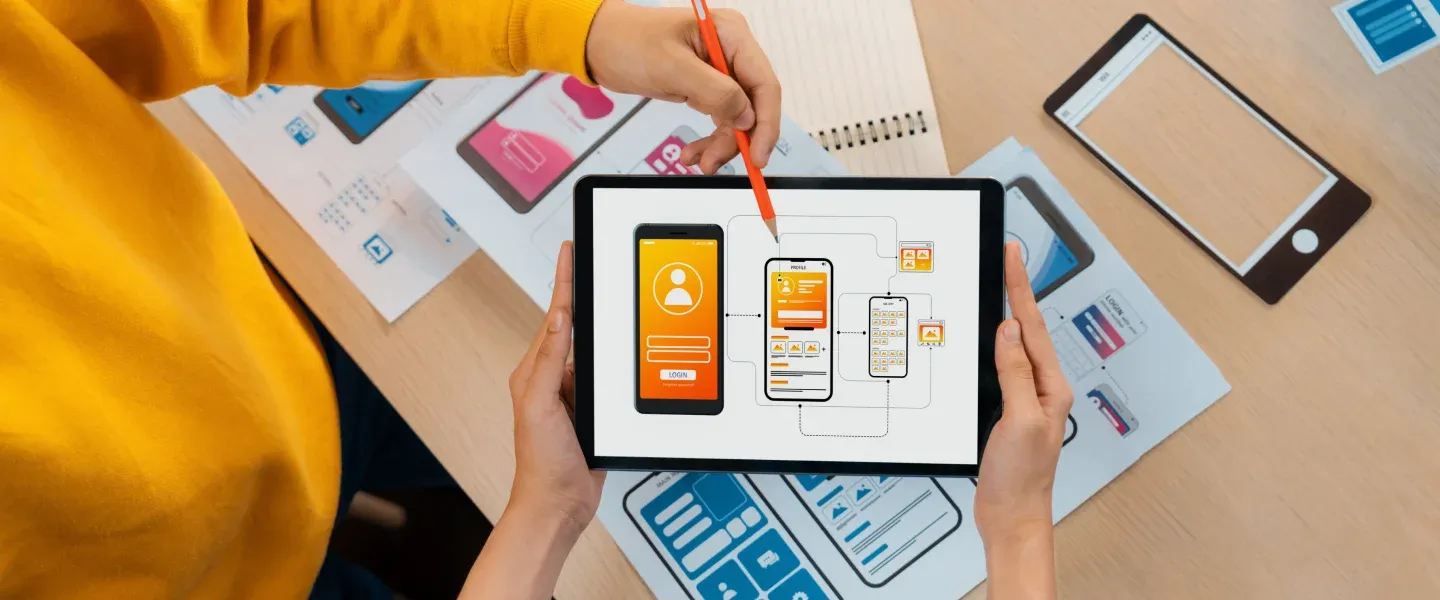Mobile application development is an essential aspect of mobile phone technology. While mobile phones have become a part of common people's lives, app development offers immense opportunities for developers, entrepreneurs, and businesses in this field.
Mobile app development is the process of creating software that is specifically designed to run on mobile devices. These apps can also work to take advantage of other mobile technologies like GPS, accelerometers, and more.
Today, the most prominent mobile app platforms are iOS from Apple and Android from Google. However, modern cross-platform tools like Flutter, React Native, Xamarin, and more allow you to share code, allowing developers to use a single code base for Apple and iOS.
Grab a cup of coffee, sit back, and explore some interesting facts about the fundamentals of mobile application development.
Mobile Application Development Fundamentals
Mobile app development starts by creating a prototype you share with your stakeholders and testing the same for fixes like functionality, performance, and ease of navigation.
We have come up with five fundamental things that you must consider during application development. However, while working on these fundamental things, you should follow the points in each step:
- apply automation wherever possible
- use cloud services to empower your app
- work with open-source tools to bring flexibility
- communicate with the team for improvements
- test the code for smooth working
User Experience
The ultimate success of your app depends on how users interact with your application. For your application to live and breathe, it should be engaging, intuitive, and easy to use. Therefore, you must optimize it for the user and real-life experience by collaborating with your target audience. You must understand their needs and design the UI (User Interface) and UX (User Experience) of your app accordingly.
Mobile apps represent convenience over web apps. It should offer convenience and single-hand navigation. Quick titbits include:
- There should be a simple sign-in process
- A quick loading of the landing page
- There should be parity with the web
Security
As the world is pivoting more and more on connectivity, cybersecurity has become the utmost concern for every user. This is especially true for apps that contain sensitive data such as credit card numbers, information related to health, etc. You must include the security of both the device and app data in your application.
You should incorporate the Concept of Least Privilege in your mobile application development process so that only those needing access to perform their jobs get authorization for it. Other Quick titbits include:
- You should increase user authentication security
- Ensure the Software Supply Chain Is Secure
- Have Safely Managed Sessions
Ease of Deployment
The process includes installing, configuring, and allowing an app for successful release. Make sure that the core supporting infrastructure of the application is simplified. It helps the SDLC process gain the flexibility to offer support and improvements occasionally. The development team can fix bugs, make enhancements, and come up with improvements easily.
You should have a deployment platform that is well-secure because it has to store images and data. Other quick titbits include:
- The application should be easily accessible to the users
- The deployment platform should have the capacity to run middleware and have enough storage to store data
- You can give users an easy way to offer feedback
Target Your Audience
Before you start the app deployment, you must survey the market, your target audience, the language the target users like, and so on. It is essential to do the user study and understand the nuances of your users. You can design UI/ UX as per their liking. It includes building the content and graphics of the app as per their taste.
Use Native Operating System For Your App
You should prefer the inherent mobile technology of the operating system for the best performance of the app. Depending upon the app's objectives, target audience, and other requirements, you can decide on operating systems between iOS, Android, and Windows. After you decide on your OS, you can pick the programming language. For example, pick Swift for iOS or Java for Android.
Quick titbits are:
- Set objectives before you pick the OS
- You should test the application to identify fields that require improvements
- Monitor the application for issues and maintain it
You can also find out different ways to improve your mobile app retention rate with our blog, A Guide to Improving Your Mobile App Retention Rate.
Conclusion
To summarize:
- Get a team on board and keep the mobile application simple by breaking it into steps.
- Don't complicate the app just for the sake of more bells.
- Make security your priority and take advantage of built-in operating system features.
However, during the process, do a market study to design the application in a way that users will love and that developers will think would be cool. You can also connect to Innoraft-mobile and web development company to get the mobile application development job done for you. We offer technical support and customer services round the clock. Connect now!
